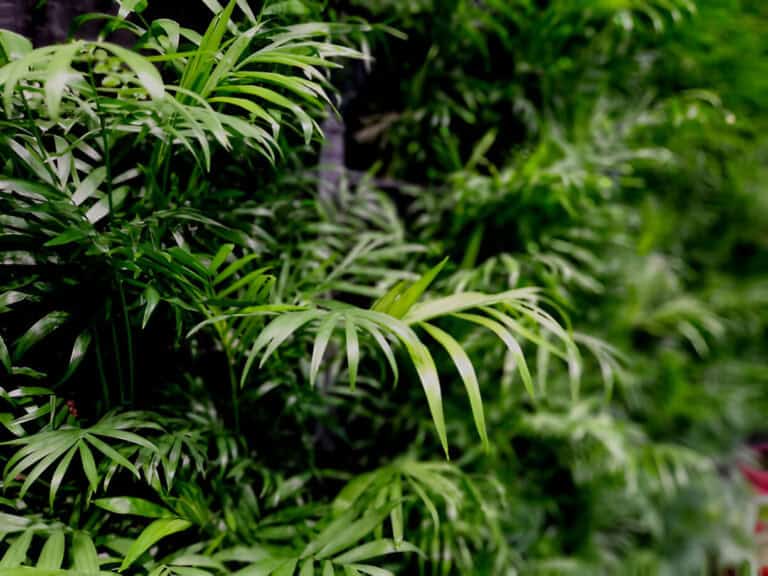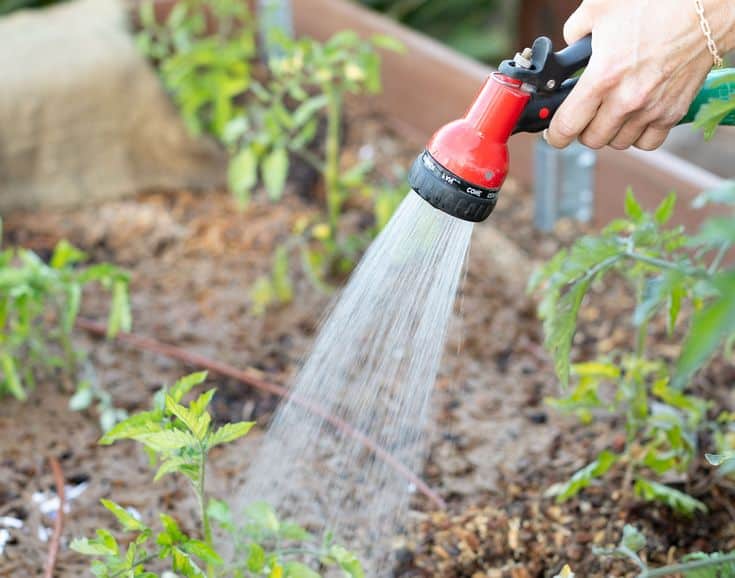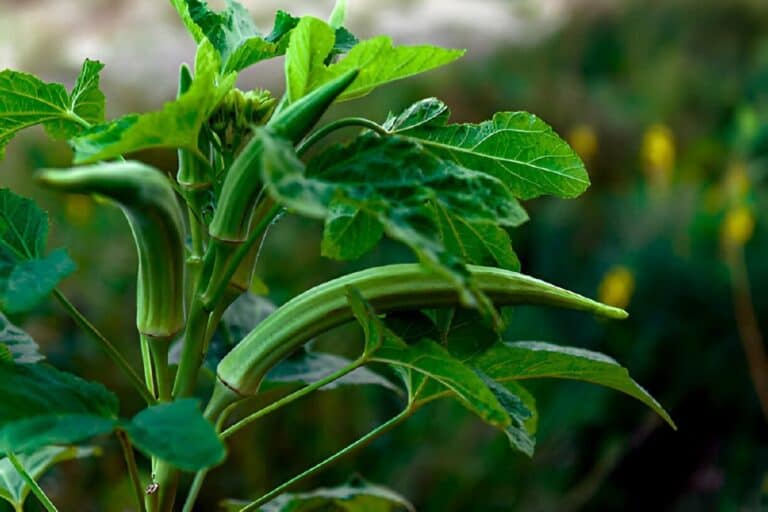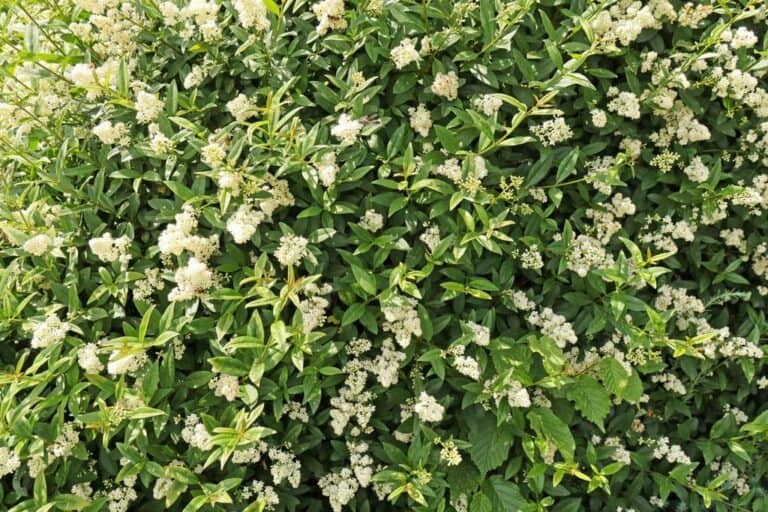Can You Eat Brussel Sprout Leaves? Are They Edible and Safe to Eat?

When it comes to cooking brussels sprouts, there are two camps: those who love them and those who hate them. If you’re in the latter camp, it’s time to give these little cabbages another chance. Roasted or grilled, brussels sprouts make a delicious side dish that’s healthy and easy to prepare.
What do you do with the remaining leaves and stems? Are brussels sprouts’ leaves edible and safe to eat?
Brussels sprouts’ leaves and stalks often end up in compost piles or going to waste. But do you know that for some people, the leaves and stalks can be delicious dishes?
Brussels sprouts can be made into a variety of dishes, such as soups or salads. The leaves can be eaten raw or cooked, and they pair well with a variety of spices. They can be cooked in a variety of ways: by boiling, steaming, or stir-frying.
Perhaps you are still wondering if Brussels sprouts’ raw leaves are audible and safe to eat. Or, if you are considering eating Brussels sprouts’ leaves but are unsure of what to do with them, this guide is for you!
Are Brussels Sprouts’ Leaves Edible?
No one would fault you for thinking that the leaves on brussels sprout stalks are not edible. After all, they do look different from the leaves on most other vegetables. But, in fact, those leaves are edible and quite delicious. They have a slightly bitter taste, but are still enjoyable when cooked properly.
The leaves of Brussels sprouts are a delicious leafy green that can be used in place of chard or collard greens. In fact, spiced with a little garlic and red pepper, the greens are delicious on their own as a side dish.
Cooking brussels sprouts greens is a great way to enjoy their flavor and nutrition without having to eat the sometimes tough stem. While there are many ways to cook them, we recommend pan-frying them in a small amount of oil.
To get started, heat up a small amount of oil in a frying pan over medium heat. Add the Brussels sprout leaves and cook for about two minutes, or until they start to turn crispy. Be sure to stir them around so that they cook evenly. Once they’re cooked, remove them from the heat and enjoy!
Why Doesn’t Everyone Like Brussels Sprouts?
Many people frequently enjoy eating Brussels sprouts, a type of vegetable. However, not everyone enjoys Brussels sprouts.
Brussels sprouts leaves are large, look like loose-headed cabbage with large, flat, wide leaves. Brussels sprouts have very high levels of glucosinolates, which can cause them to taste bitter to some people. Glucosinolates are biologically active compounds consisting of sulfur and nitrogen. Sinigrin is the most prominent glucosinolate in the Brussel Sprouts. It is this glucosinolate that gives them their bitter flavor.
While some people enjoy the bitterness of Brussels sprouts, others find it unpleasant and off-putting. As a result, not everyone likes Brussels sprouts.
So you’re probably just a regular taster who dislikes Brussels sprouts.
What Do Brussels Sprouts’ Leaves Taste Like?
The leaves’ taste is mild, similar to kale if harvested early. It is tender and sweet, lacking the bitter cruciferous flavor found in the plant’s sprouts themselves.
If the leaves are allowed to grow larger, they will become bitter. Brussels sprouts greens can be eaten raw or cooked.
Brussels sprouts leaves are a good source of vitamins A, C, and K. It is also rich with calcium, iron, magnesium, and potassium.
How to Cook Brussels Sprouts’ Leaves for Delicious Dishes
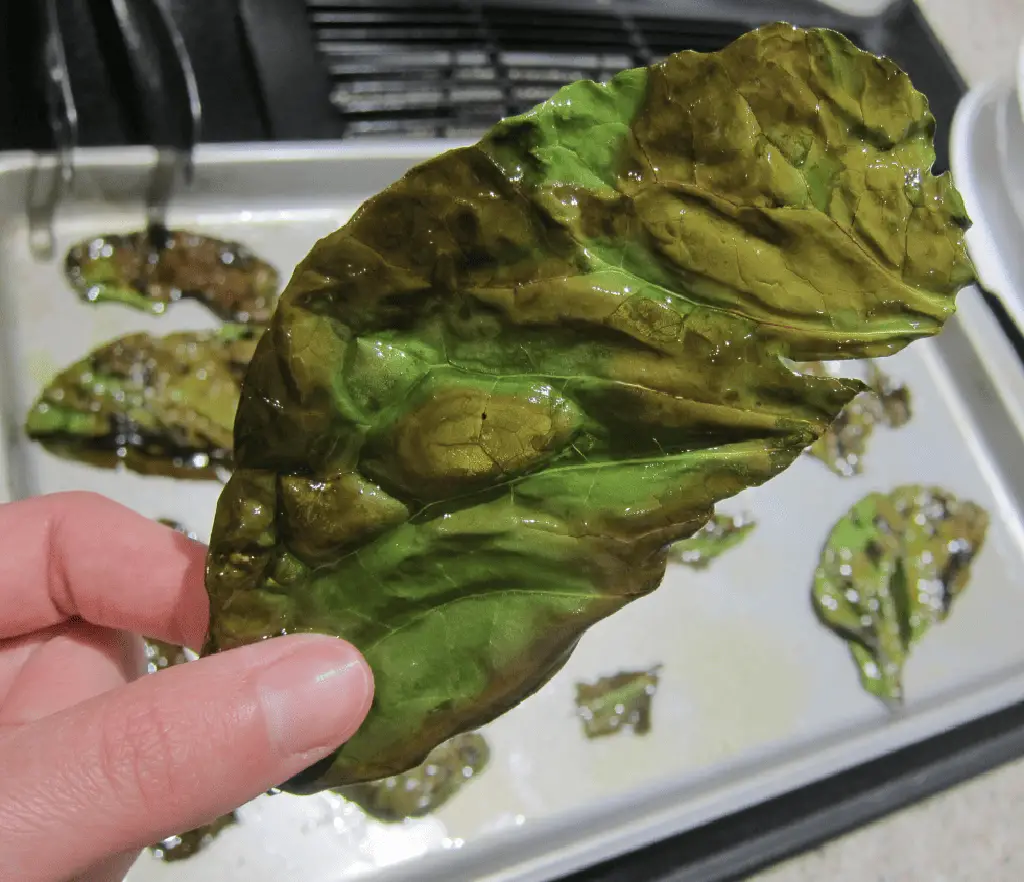
Brussels sprouts leaves can be used raw or in cooked applications such as stuffing, steaming, roasting, and sautéing. When raw, they can be sliced or chopped and added to salads and smoothies.
Brussels sprouts leaves can also be used to make coleslaw or kimchi, added to fish tacos, roasted to make crispy chips, or steamed, stuffed, and rolled into a wrap.
Brussels sprouts leaves pair well with bright citrus flavors, vinegar and vinaigrettes, sausages, bacon, pork belly and pork shoulder, grilled, smoked, and fried white fish, apples, pears, cream, melting cheeses, pistachios, pine nuts, walnuts, almonds, peppers, and chiles.
The next time you have some Brussels sprouts leaves to spare, don’t toss them! Here are three ways to put them to use:
1. In a salad: Shredded Brussels sprouts leaves make a great addition to any green salad. They add a nice crunch and flavor that compliments the other ingredients.
2. As a wrap: Spread some hummus or avocado on a Brussels sprouts leaf, then top with your favorite fillings. This makes for a healthy, satisfying snack or lunch.
3. As an entrée: Toss shredded Brussels sprouts leaves with some cooked quinoa and diced veggies for a quick and easy meal. You can also serve it with grilled chicken or fish.
Recipe with Brussels Sprouts’ Leaves
Recipe 1: Crispy Brussels Sprouts Leaves with Garlic and Parmesan
Brussels sprouts are often enjoyed as whole roasted vegetables, but have you ever thought about utilizing their delicate and tender leaves? This recipe transforms those overlooked leaves into a delectable dish bursting with flavor. Get ready to experience the delightful crunch of crispy Brussels sprouts leaves complemented by the aromatic combination of garlic and Parmesan.
Ingredients:
- 2 cups Brussels sprouts leaves
- 2 tablespoons olive oil
- Salt and pepper to taste
- 2 cloves garlic, minced
- 1/4 cup grated Parmesan cheese
Instructions:
- Preheat the oven to 375°F (190°C).
- Wash and dry the Brussels sprouts leaves.
- In a bowl, toss the leaves with olive oil, salt, pepper, minced garlic, and grated Parmesan cheese.
- Spread the seasoned leaves on a baking sheet lined with parchment paper.
- Bake for 15–20 minutes, or until golden brown and crispy.
- Allow the leaves to cool for a few minutes before transferring them to a serving dish.
- Optionally, garnish with more Parmesan cheese and a drizzle of balsamic glaze.
Recipe 2: Sautéed Brussels Sprouts Leaves with Bacon and Balsamic Reduction
Indulge in the irresistible combination of smoky bacon and tangy balsamic reduction as they unite with the delicate leaves of Brussels sprouts in this savory and comforting recipe. Sautéing the leaves brings out their natural sweetness and tenderizes them, while the bacon and balsamic reduction add layers of richness and complexity to each bite.
Ingredients:
- 2 cups Brussels sprouts leaves
- 4 slices bacon, cooked and crumbled
- 1 tablespoon olive oil
- 2 tablespoons balsamic reduction
Instructions:
- Separate the leaves from the Brussels sprouts and rinse them.
- Heat a skillet over medium heat and add olive oil.
- Add the Brussels sprouts leaves to the skillet and sauté for about 5 minutes, until tender.
- Drizzle the balsamic reduction over the leaves and let it simmer for another minute.
- Sprinkle the crumbled bacon over the leaves and toss gently to combine.
- Cook for an additional minute to allow the flavors to meld.
- Transfer to a serving dish and enjoy as a side dish or light lunch.
These simplified recipes offer a delicious way to enjoy Brussels sprouts leaves. Whether you opt for the crispy and cheesy version or the sautéed one with bacon and balsamic reduction, both dishes showcase the natural flavors and textures of the leaves in an easy-to-follow manner.
What Happens if You Eat Too Many Brussels Sprouts?
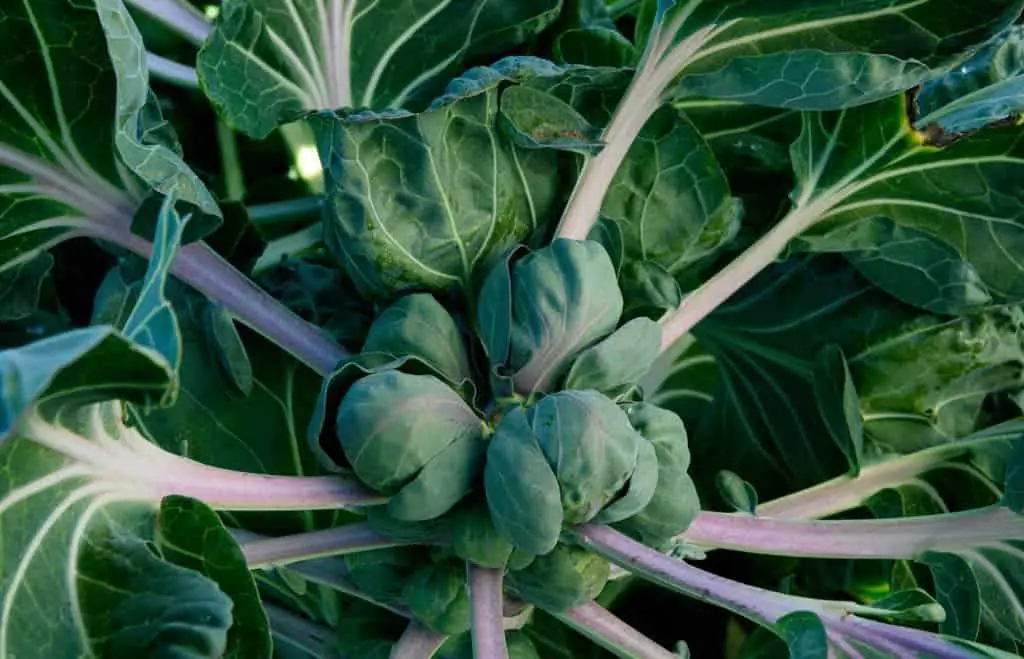
If you’re like most people, you probably think of Brussels sprouts as a healthy side dish like any other vegetable. You may think the quantity of food you eat is not a concern for your health. But did you know that eating too many Brussels sprouts per person is not recommended?
Brussels sprouts contain a compound called sinigrin. Sinigrin can cause an increase in the levels of histamine in your body, which can lead to an allergic reaction.
If you eat too many Brussels sprouts, you may experience symptoms such as hives, wheezing, and a runny nose. You may also find it difficult to breathe. If you experience any of these symptoms, stop eating Brussels sprouts and see your doctor right away.
WARNING![]()
You also don’t want to eat bad brussel sprouts. You may have gastrointestinal problems, food poisoning, or allergic reactions.
Can You Eat Brussels Sprouts Flowers?
Brussels sprouts’ flowers are small and have a white center with four petals that are green on the outside. They grow on the top of the Brussels sprout plant and are ready to eat when they are about an inch in diameter.
So, can you eat Brussels sprout flowers? Yes, you can eat Brussels sprouts flowers. They are edible and have a slightly bitter taste. Some people say they taste like broccoli or cauliflower.
Flower sprouts can be steamed, boiled, microwaved, stir-fried, or blanched in a variety of ways. To prepare the flower sprouts for your cooking, simply blanch them before stir-frying them with the other ingredients; it’s that simple.
Do Birds Eat Brussels Sprout Leaves?
Most of us know that birds like to eat insects, but did you know that they also enjoy eating the leaves of Brussel sprouts?
While it’s not a common sight, you may see a bird or two perched on top of a Brussel sprout plant, eating away at the leaves.
Birds seem to enjoy the taste of Brussel sprout leaves, and they are a good source of nutrients for them. The leaves are high in vitamin C and other antioxidants, which help keep the birds healthy.
Wood pigeons have a constant hunger for brassica plants, such as spring cabbage, cauliflower, and Brussels sprouts. This bird species will peel brussels sprouts’s leaves off these plants until the stalks are exposed.
So if you’re growing Brussel sprouts in your garden, don’t be surprised if you see a few birds perched on top of the plants!
Is Brussels Sprouts Stalk Edible?
When it comes to Brussels sprouts, the stalk is often overlooked. However, did you know that the stalk is also edible and can be quite delicious?
Brussels sprouts stalks are crunchy, and their flavor is slightly sweet. Some people say it tastes like a cross between celery and asparagus. In fact the stalk has a texture similar to celery.
Brussels sprouts stalks are a great addition to your diet. They can be eaten raw, steamed, or boiled. The best way to cook them is in the oven.
While they are not as popular as the Brussels sprouts themselves, they are definitely worth a try.
Conclusions
In conclusion, Brussels sprouts leaves are edible and safe to eat when raw. They are a good source of dietary fiber, vitamin C, and vitamin K. The leaves of Brussels sprouts are a delicious leafy green that can be used in place of chard or collard greens.
However, they also contain compounds that can be harmful if eaten in large quantities. So, enjoy Brussels sprouts leaves in moderation as part of a healthy diet.
FAQs
Can you eat the leaves of Brussels sprouts?
Yes, Brussels sprouts leaves are edible and safe to eat. In fact, the leaves of the Brussels sprout plant are delicious and packed with nutrients.
What are Brussels sprout tops?
Brussels sprout tops refer to the leaves of the Brussels sprout plant.
Are sautéed Brussels sprouts leaves a good side dish?
Yes, sautéed Brussels sprouts leaves can make a great side dish. They are nutritious, low in calories, and taste like Brussels sprouts.
How do you sauté Brussels sprouts leaves?
To sauté Brussels sprouts leaves, heat some oil or butter in a pan over medium heat. Add minced garlic and red pepper flakes (optional) and sauté for a few seconds. Add the Brussels sprout leaves and sauté for a few minutes until tender. Season with salt and pepper to taste.
What are some recipe ideas for using Brussels sprouts leaves?
You can roast, sauté, or stir-fry Brussels sprouts leaves. They can also be used in soups or stews. Try adding them to salads or using them as a wrap for other ingredients.
Can you cut the leaves of a Brussels sprouts plant?
Yes, you can cut the leaves of the Brussels sprouts plant. In fact, the plant will continue to produce new leaves as long as the stem is intact.
How do you grow Brussels sprouts?
Brussels sprouts grow best in cool weather and require plenty of water. The plant can take up to 3 months to complete the growing stages of brussel sprouts before producing actual sprouts.
Can you eat the inner leaves of Brussels sprouts?
Yes, the inner leaves of Brussels sprouts are edible and can be cooked or eaten raw. The leaves form a head around the central stem of the plant.
Are Brussels sprouts leaves similar to collard greens?
Yes, Brussels sprouts leaves are similar to collard greens in texture and taste. They can be cooked in a similar way and require less cooking time than collard greens.
Where can I buy Brussels sprouts leaves?
You can buy Brussels sprouts leaves at most farmers markets or grocery stores that carry fresh produce.

